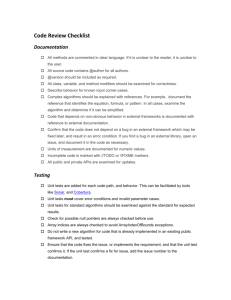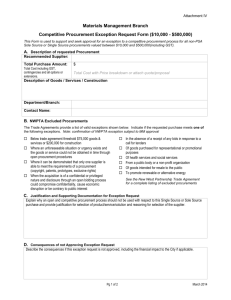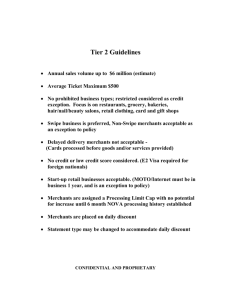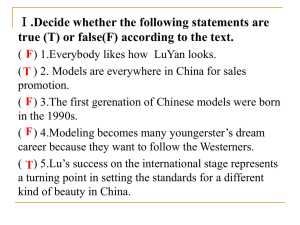Data analysis
advertisement
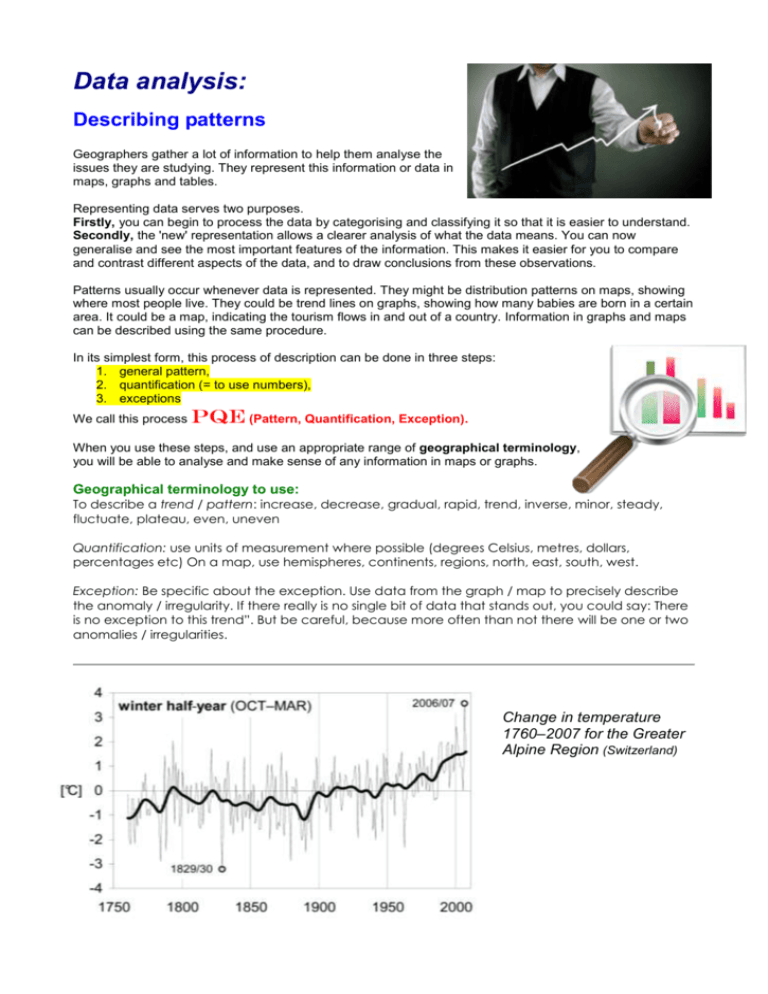
Data analysis: Describing patterns Geographers gather a lot of information to help them analyse the issues they are studying. They represent this information or data in maps, graphs and tables. Representing data serves two purposes. Firstly, you can begin to process the data by categorising and classifying it so that it is easier to understand. Secondly, the 'new' representation allows a clearer analysis of what the data means. You can now generalise and see the most important features of the information. This makes it easier for you to compare and contrast different aspects of the data, and to draw conclusions from these observations. Patterns usually occur whenever data is represented. They might be distribution patterns on maps, showing where most people live. They could be trend lines on graphs, showing how many babies are born in a certain area. It could be a map, indicating the tourism flows in and out of a country. Information in graphs and maps can be described using the same procedure. In its simplest form, this process of description can be done in three steps: 1. general pattern, 2. quantification (= to use numbers), 3. exceptions We call this process PQE (Pattern, Quantification, Exception). When you use these steps, and use an appropriate range of geographical terminology, you will be able to analyse and make sense of any information in maps or graphs. Geographical terminology to use: To describe a trend / pattern: increase, decrease, gradual, rapid, trend, inverse, minor, steady, fluctuate, plateau, even, uneven Quantification: use units of measurement where possible (degrees Celsius, metres, dollars, percentages etc) On a map, use hemispheres, continents, regions, north, east, south, west. Exception: Be specific about the exception. Use data from the graph / map to precisely describe the anomaly / irregularity. If there really is no single bit of data that stands out, you could say: There is no exception to this trend”. But be careful, because more often than not there will be one or two anomalies / irregularities. Change in temperature 1760–2007 for the Greater Alpine Region (Switzerland) Describing data in three steps By reading your PQE, other people should be able to understand the data you are describing, without needing to see the original map or graph. Step 1: Pattern This part is of the data analysis is a simple and general description of the overall pattern. The best way is to describe your first impression of the data. There will be parts of the data that do not fit with your description of the general pattern, but that is to be expected. It is a good habit to start this step with: “The overall pattern of X could be described as uneven / even + more info …. X = the data you are describing (i.e. the amount of dollars tourists spend, rise of CO2 emissions, general population etc look at the title of the map/graph) Words you could use: increase, decrease, gradual, rapid, trend, inverse, minor, steady, fluctuate, plateau, even, uneven. Always refer to the title of the map / graph or data that is described. Step 2: Quantification (Quantifying the data = Using numbers to explain the data) You should now illustrate this general pattern with examples from the data, using numbers or areas on a map. Try to pick examples which support the general pattern you have detected. The examples should, where possible, represent the extremes of the data, reinforcing the general pattern. Give place or region names when describing a map. This should be the biggest part of your PQE. Use numbers and measurements, use the units of measurement used in the graph / map (dollars, kilometres, temperature etc). Words you could use: units of measurement where possible (degrees Celsius, metres, dollars, percentages etc) On a map, use hemispheres, continents, regions, north, east, south, west, names of countries. Step 3: Exception The next step is to describe any exceptions to this general pattern. An exception is anything that stands out as different to the general pattern. Highlighting the exceptions will allow you or other people to ask more specific questions and draw conclusions later. Be specific when highlighting the exception, describe where it starts / ends. Exception: If there really is no single piece of data that stands out, you could say: “There is no exception to this trend”. But be careful, because more often than not there is an anomaly / irregularity.
